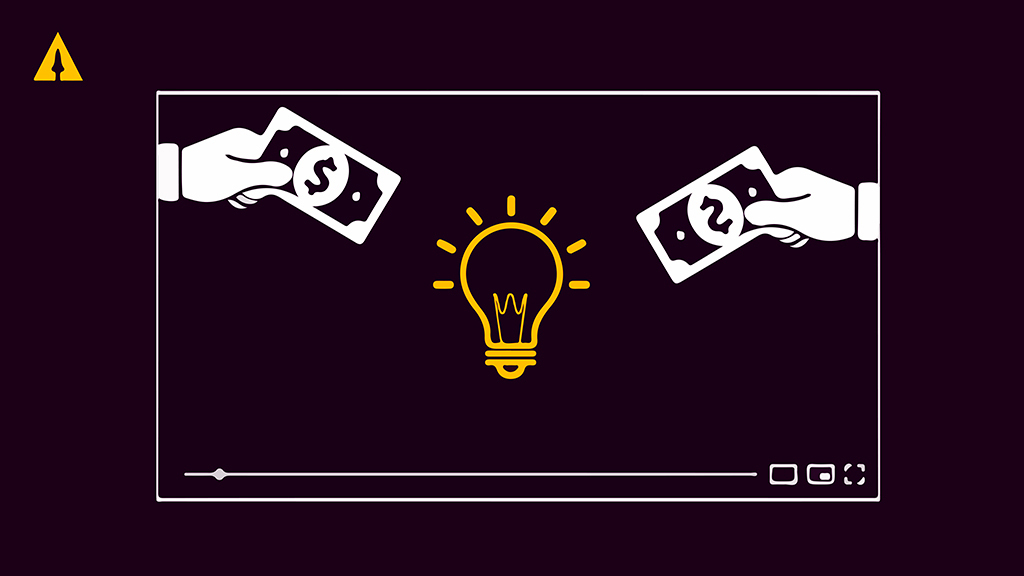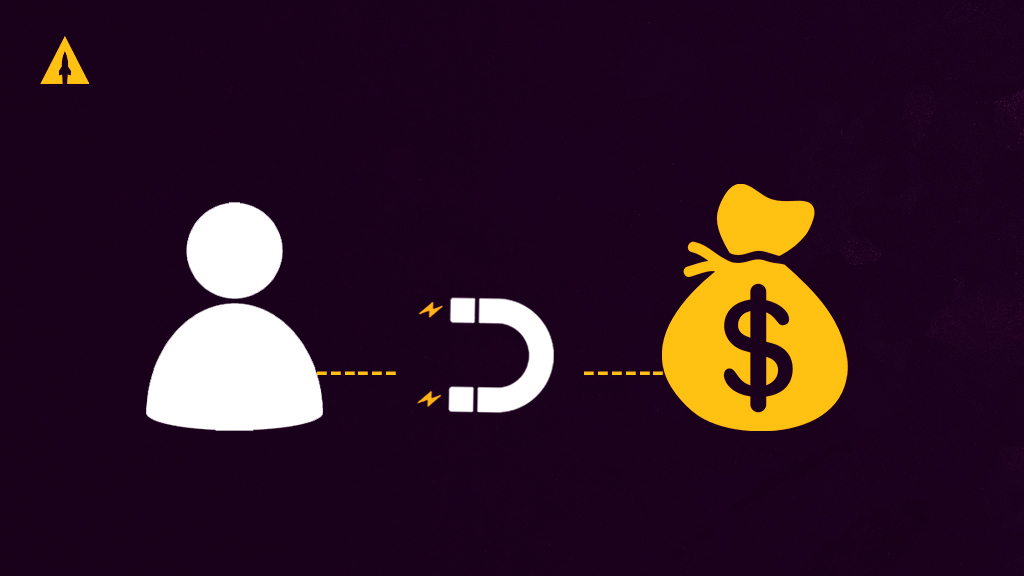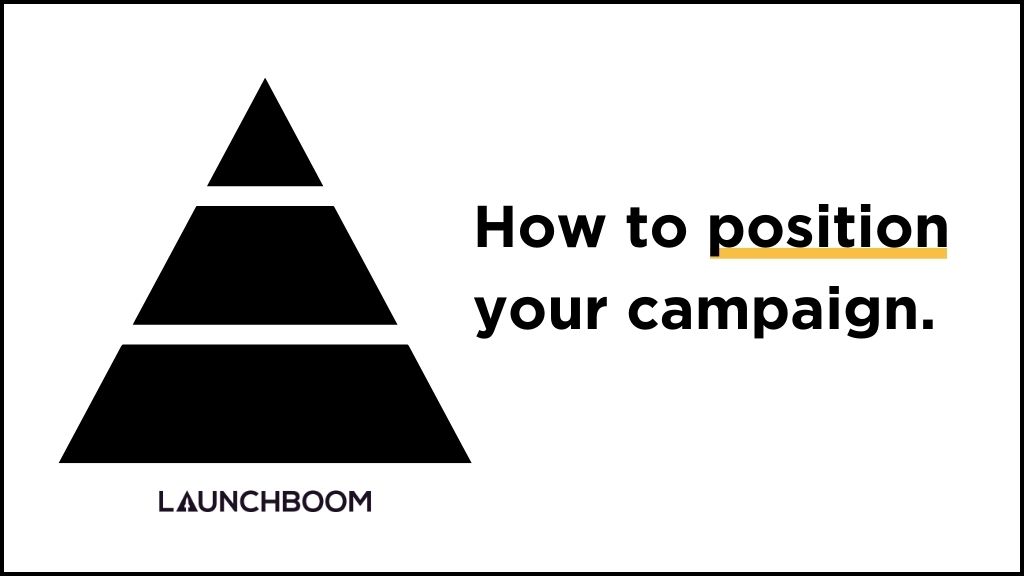
The most important and overlooked part of the crowdfunding campaign is the product positioning. Product positioning is the foundation of the entire campaign. If you build a weak foundation, everything you build on top will eventually fall apart. That’s why it’s so important you get this right.
To do this, I’ll be showing you a product positioning framework we use at LaunchBoom. It’s called the Consumer Based Brand Equity (CBBE) Pyramid. I’ve found this to be lean enough that it doesn’t take too much time to complete, yet powerful enough to have a profound impact on your campaign.
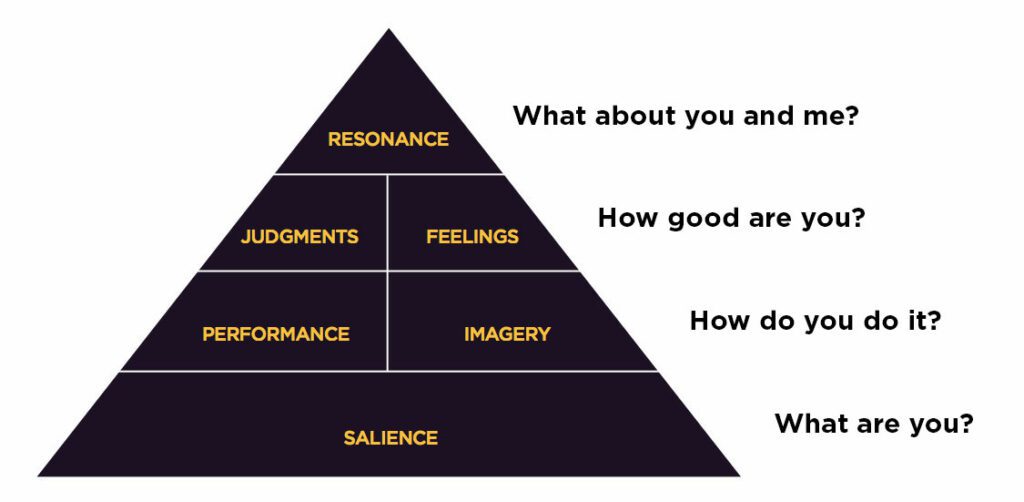
The underlying principle of CBBE is the assumption that you do not own your brand, consumers do. It is something that lives in their mind. For that reason, we approach product positioning as if we are a consumer.
To use the pyramid framework above, it’s best to read it bottom to top. Reading it from bottom to top tells the story of a consumer’s relationship with a brand and each tier builds upon the one below it. Consumers may develop thoughts and feelings for every box in the CBBE Pyramid in a single second, but they will still run from bottom to top.
To illustrate how this framework works, let’s try an experiment. I’m going to write down a brand you most likely know. I want you to notice what appears in your mind’s eye – what images, associations, sensations, and experiences appear? Here we go…
Starbucks.
Ok, your brain has already gone through the entire framework in the blink of an eye. I’ll break down how it works for me.
- Salience: sells coffee
- Performance: affordable, locations everywhere, fast, easy experience, same coffee every time
- Imagery: green mermaid logo, cozy coffee shop, coffee with cream
- judgments: consistent, friendly staff, coffee tastes decent
- Feelings: warmth, caffeine buzz, trustworthy, dependable, loyal
- Resonance: will choose Starbucks and go with friends & family because I trust the company and consistent experience I will get
You may have completely different associations with Starbucks, but I bet you relate to quite a few of the words I wrote. Starbucks has spent a lot of time & money for me to have those associations with their brand.
Even though you are just starting, you can still design how you want your consumer to think and feel about your brand. That is what we are going to be doing during this process. Let’s start with the base of the pyramid.
Contents
Level 1: What are you?
Level 1 makes up the foundation of the pyramid and contains what we call salience. During this level, the consumer is asking the broad question, “What are you?” If your brand has salience, they know who you are and they know what problem you solve.
The best way to establish salience is to state what problem you solve in the simplest way possible. You’ll want to use words and broad associations that consumers will recognize. This way, consumers can quickly associate your product with a category they already understand. Do not overthink this part!
For example, our campaign for the Give’r Frontier Mittens raised $1,356,709. Our headline was “the best damn mittens ever.” The “mittens” part is playing to salience. We could have gone with “the quad-layer, super warm, hand insulator.” This is all true, but we didn’t choose that.
Why?
Because no one knows what that means. They can probably pull some associations from that sentence and may think it sounds cool, but if they aren’t 100% sure what you are, then we failed.
In the questionnaire, you’ll be asked a few questions like:
- What product category are you in?
- What problem do you solve?
- What is your product in a sentence or two?
Again, keep it simple. Dumb it down and use words that your audience understands immediately.
Level 2: How do you do it?
The next level of the pyramid contains performance and imagery. During this level, the consumer is asking the question, “How do you do it?” This is where they are trying to understand what makes you different from the competition. Since there are two sections to this level, I’ll look at each separately.
PERFORMANCE
Some questions that you’ll answer about performance are:
- What makes you different from your competition (points of difference)?
- What makes you similar to your competition (points of parity)?
- What are the core features of your product?
- How valuable is your product?
For example, our client LoftTek raised $1,041,308. Here’s a graphic we used that plays entirely to performance:
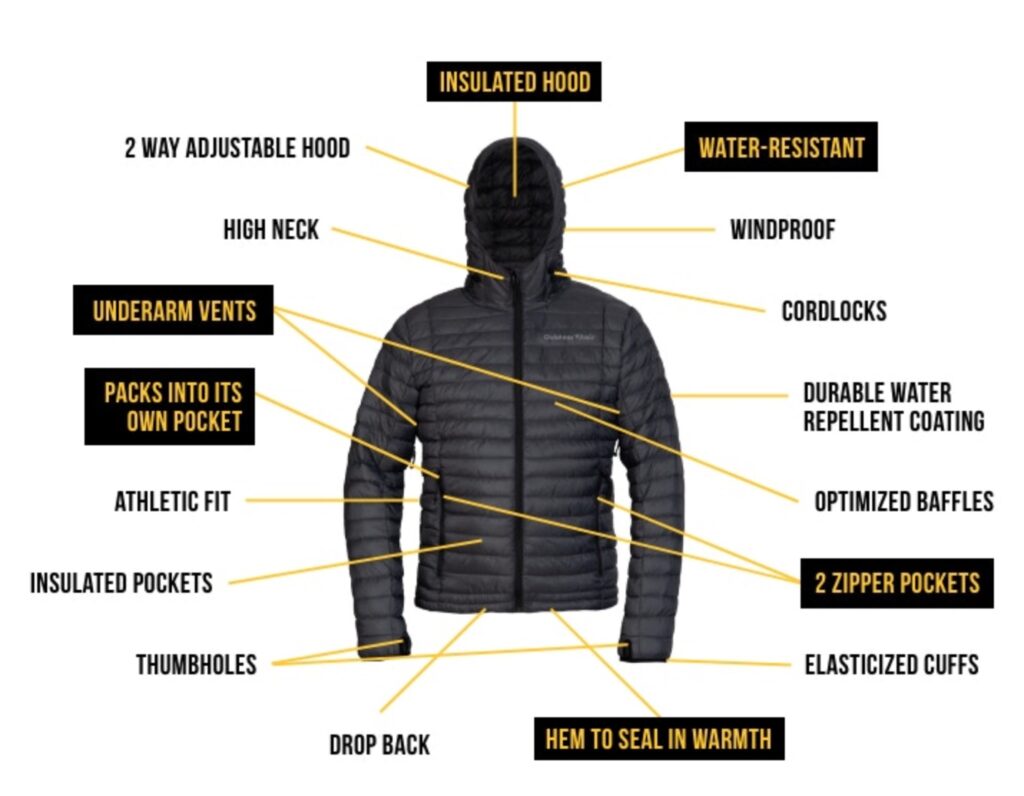
As a consumer, I am able to see all the primary features of the jacket with certain features highlighted. This also illustrates the points of parity and points of difference. For example, many jackets have zipper pockets, a hood, water resistance, etc. – consumers love these features. But not many jackets have all these features.
The fact that LoftTek is over-engineered not only is a feature, it’s a point of difference. This is the level of detail you’ll want to write out in your questionnaire.
In the end, the main goal of these questions is for you to identify how you are better than your competition. Ideally, you’ll have 3 main points of difference.
IMAGERY
Some questions that you’ll answer about imagery are:
- What brands would you associate with your product?
- Where is your product used?
- How is your product used?
For example, our campaign for the William Painter Empire Sunglasses raised $865,235. We saw their product being used outdoors in adventurous locations. We also wanted to associate their brand with one that was high-tech, adventurous, and innovative. That’s why we chose NASA.
Our top performing headline in ads was “These NASA Inspired Sunglasses Are Made Of Aerospace-Grade Titanium.” Below, you can see our best performing ad that captures exactly what we had come up with during the positioning process.
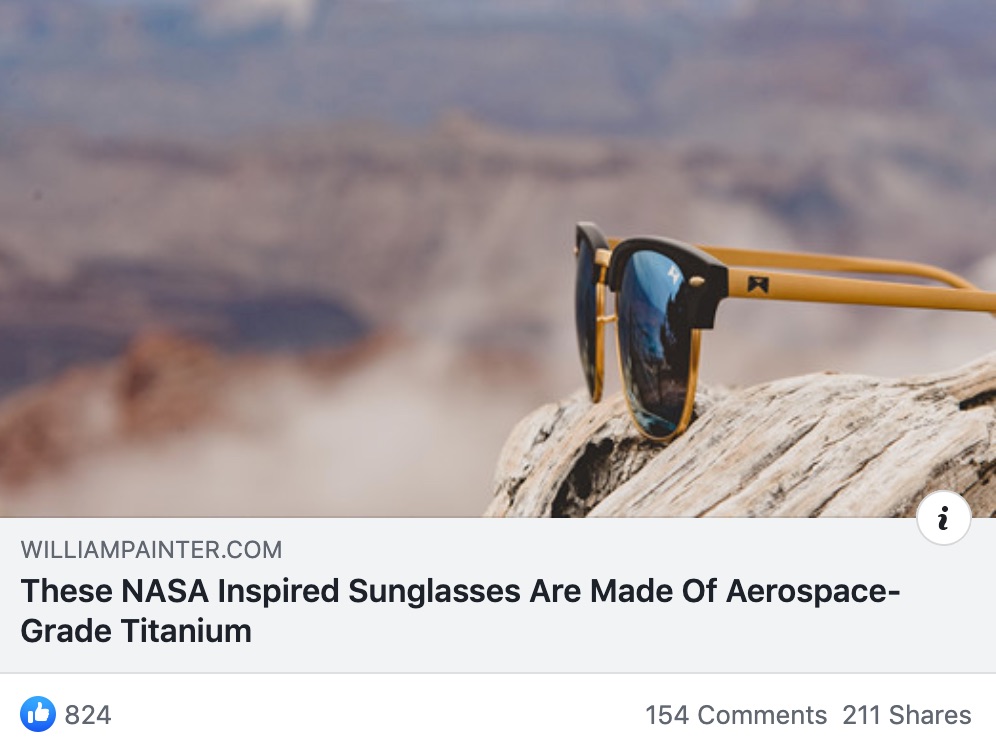
This section of the pyramid will most influence your photography and video. Identify where you think people will use your product. Then, capture imagery in those locations.
Level 3: How good are you?
The next level of the pyramid contains judgments and feelings. During this level, the consumer is asking the question, “How good are you?” Essentially, the consumer is trying to figure out what they think and feel about your brand/product. They are taking your performance and imagery points from the layer below, evaluating them, and forming opinions about them.
JUDGMENTS
Some questions that you’ll answer about judgments are:
- What positive judgments will people have about your product?
- What concerns or doubts may people have about your product?
- What credibility do you have in the space?
For our client, The Neck Hammock, who raised $1,642,934, we claimed it could give neck pain relief in ten minutes or less. We knew that this would cause concern and doubt in people. Here are some concerns that we thought people would have:
- Is there scientific evidence of why it works?
- Are there testimonials from people that have used it?
- What credibility does the person have that created it?
Each of these concerns, and many more, were directly addressed in our messaging. For example…
- Is there scientific evidence of why it works?
- We explained the science of Cervical Traction and how it works.
- What credibility does the person have that created it?
- The founder is a doctor and licensed physical therapist and used the device on his patients.
- Are there testimonials from people that have used it?
- We included written and video testimonials from the founder’s clients.
Because we took the time to identify possible judgments before we launched, we were able to address any concerns, doubts, or questions of credibility directly within our messaging.
FEELINGS
Some questions that you’ll answer about feelings are:
- How do you want people to feel when using your product?
- What is the voice of your message? (As a friend, a teacher, a doctor, a professional, an expert – what type of language will we be using?)
- What is the tone of your message? (Funny, somber, optimistic, epic, intense, friendly, etc.)
Our client AIR PIX, who raised $1,615,135, is an aerial drone that allows you to take photo and video selfies. We wanted to capture the feelings of youthfulness and fun. When thinking through this, we knew that the word “drone” did not convey those feelings. Most consumers associate drones with tech-focused brands or the military. This is not the mental imagery we wanted the potential consumer to associate with AIR PIX.
To combat this, we decided to drop the word “drone” from our messaging. Instead, we called AIR PIX an “aerial camera” and our most popular headline was “your pocket-sized aerial photographer.” Even though it’s technically a drone, we found another way to describe what AIR PIX is without that word.
Level 4: What about you and me?
We’ve made it to the top of the Pyramid where the only thing left to talk about is resonance. During this level, the consumer is asking the question, “What about you and me?” This is where we identify reasons why the consumer will have a loyal, active relationship with your brand.
Some questions that you’ll answer at this stage are:
- Why would you be missed?
- How is your mission in alignment with your customer’s mission?
- Why will your customers only choose you?
Our client etee, who raised $380,641, leaned heavily into resonance. It’s a membership club for those that want plastic-free alternatives to everyday items. Their mission is to remove plastic from our world. This is a massive goal, but one that their audience can get behind.
But resonance isn’t all about having an altruistic mission. In fact, most brands don’t have a massive, world-changing mission, and that’s okay!
Let’s go back to the Starbucks example. At the end of the day, they are making coffee. Now I love coffee, but the world doesn’t need it the same way we need to reduce our plastic consumption. Still, Starbucks has been able to build an extremely loyal and active customer base.
How?
Because resonance is about more than an altruistic mission. It’s about anything that creates loyalty between the customer and the brand. For Starbucks, this includes things from loyalty programs to creating a sense of belonging in their stores.
In the long-term, resonance is most important. But for most product creators with brand new companies, it isn’t going to be the reason why people buy. It’s important to remember this when spending your valuable time coming up with your positioning.
Developing Your Product Positioning
Download the Product Positioning Worksheet. You’ll want to fill out each question as completely as possible. If you are stuck, you may be overthinking the question. It shouldn’t take more than two hours to fill out. The information below will guide you through filling it out.
PART 1: CBBE QUESTIONNAIRE
In the first section, we break down each part of the CBBE Questionnaire and have specific questions for you. Go through each question and answer as completely as possible. I’ve found it helpful to use bulleted lists for many of these so I can get an abundance of ideas out on paper.
PART 2: TARGET MARKET
With the questionnaire complete, it’s time to identify who you think your target market is — the people that actually want to buy your product.
For this part, you’ll identify the Top 3 Audiences you believe will be most interested in your product. Here’s an example of an audience filled out:
Audience #1: Snowsport enthusiast
- Age range: 25-44
- Gender: Male/female
- Interests: Atomic Skis, Fischer, Snowboard, Cross-country skiing, Snowboard Magazine, Freeskiing, Transworld Snowboarding, Freeskier Magazine, Backcountry skiing, Ski mountaineering, Alpine skiing, Freestyle skiing or Burton Snowboards
- Geographic location: United States
These audiences are going to especially come in handy when we get to the advertising portion of your prelaunch.
PART 3: VALUE POSITIONING
With the questions answered and possible audiences identified, you are ready to distill your answers into more focused, usable messaging.
The first section of Value Positioning is to identify your Top 3 Differentiators. Essentially, how is your product WAY better than what already exists? If you don’t have at least one differentiator that is much better than the competition, you probably shouldn’t launch.
The second section of Value Positioning is to identify your Headlines. For this, I like to envision the crowdfunding campaign page, which has both a headline and subheadline for the product. A well written headline and subheadline are able to simply communicate the value of your product.
BRINGING IT ALL TOGETHER
At this point, you have come up with your initial hypotheses around positioning your product. This includes how you believe you should position the value of your product and whom you should target. Congrats on getting through most people’s least favorite part of the process!
It’s important to note again that your initial product positioning is pure hypothesis. Nailing your product positioning is an iterative process that requires testing. Stay open and get ready for the current positioning to be challenged and changed.
Armed with this information, you are now ready to move on to building the assets you need to start your prelaunch.
Looking for more information on how to create, design, and manufacture your next product? Do not miss these 6 steps:


